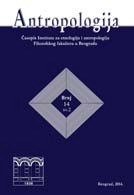GRAVES, NAMES AND KINSHIP: MATERTERA AND AMITA IN ROMAN LIBURNIA
Graves, Names and Kinship: Matertera and Amita in Roman Liburnia
Author(s): Miroslava MirkovićSubject(s): Applied Linguistics, Local History / Microhistory
Published by: Институт за етнологију и антропологију
Keywords: matertera; amita; cognatio; matrilineal origin; mater; missed pater; onomastic; cognatio
Summary/Abstract: Among many thousand titles about Roman family1 only a few concern the extended family, aunts, uncles and cousins.2 They are seldom mentioned by the ancient authors. The inscriptions provide the main evidence in the research. Progress in study could be expected from the empirical research based on them. However few in number, they are important in defining the relations within the family. The pages that follow are dedicated to the study of matertera and amita in Liburnia. The inscriptions from Liburnia, the coastal zone of the northern Adriatic, deserve special attention, because Liburnians differ from other people in the province of Dalmatia in terms of their social structure. The women were dominant in the family and economy. The study is based on onomastics in the inscriptions. Nomen in Roman society passed along the male line. Mater, matertera and avunculus are biologically connected as children of the same parents and as they had common father, they must also have had a common family name. The same rule is to be expected in the parallel agnatic group on the father’s side. Pater, patruus and amita must have had the same family name. Different practice in the inscriptions from Liburnia, and in some cases from other parts of the Roman Empire, suggest a special relationship in the family and deserve comment. They will be analysed in the pages that follow.
Journal: Antropologija
- Issue Year: 17/2017
- Issue No: 2
- Page Range: 25-36
- Page Count: 12
- Language: English

